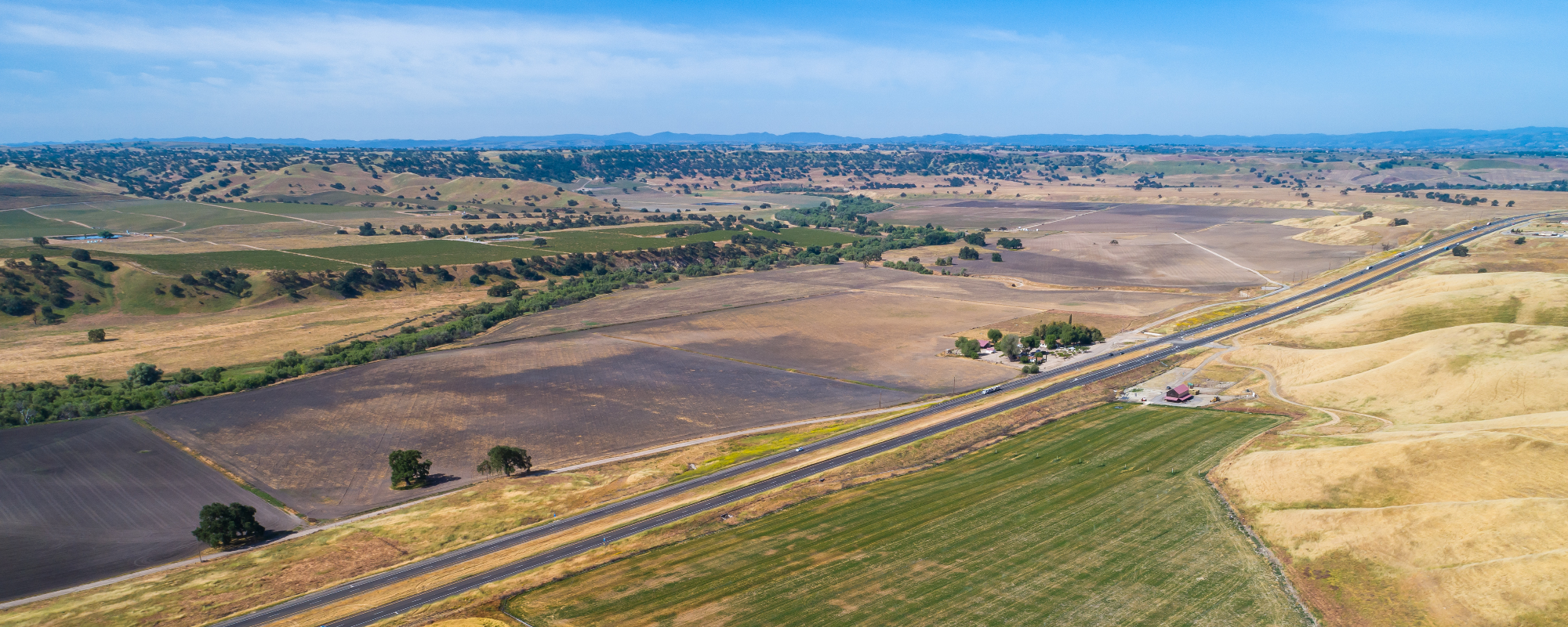California Water Rights Series: Episode 4
CALIFORNIA’S WATER: SGMA & THE WILLIAMSON ACT
HOW DOES THE SUSTAINABLE GROUNDWATER MANAGEMENT ACT IMPACT LAND PROTECTED UNDER THE WILLIAMSON ACT?
For the past year, we’ve been focusing on water—the lifeblood of all things agriculture and existence as we know it. Of greatest concern are the ongoing drought, the Sacramento-San Joaquin Delta crisis, and the implementation of Sustainable Groundwater Management (SGMA).
As mentioned in a previous blog, the Western Agriculture Processing Association has called SGMA “a devastating law that severely impacts crop irrigation” and “the most important issue facing us today.”
The restrictions placed on water pumping and deliveries has forced many California farmers and ranchers to fallow their fields, thus losing more than $1 billion in revenue and countless jobs.
SGMA impacts farms and ranches of all sizes, but what about land protected by the Williamson Act? In this blog, we’ll delve into the history of the law and how SGMA is changing how our land is used.
What is the Williamson Act?
The Williamson Act, also known as the California Land Conservation Act of 1965 (or Ag Preserve), enables local governments to enter into contracts with private landowners that designate specific parcels of land to agricultural or open space use. In return, the property’s tax assessments are reduced by 20% to 75%.
The law presumes prime land can sustain commercial agriculture if there’s at least 10 acres, or 40 acres if it’s non-prime land. These contracts must be for a minimum of 10 years and are automatically renewed each year. Landowners can request a cancellation, but they have to pay a hefty fee.
The Impact of SGMA on Williamson Act Land
In the San Joaquin Valley, approximately 3 million acres of irrigated land is covered by Williamson Act Contracts. However, this could change as the drought and SGMA implementation motivate Williamson Act contractors to convert their irrigated farmlands to other uses—such as dryland crops, habitat restoration, and solar developments.
Last year, the Public Policy Institute of California held a stakeholder workshop to discuss whether SGMA is compatible with farmland preservation.
“Broadly speaking, stakeholders in our workshop expressed a desire not to penalize farmers for losing water due to SGMA,” the institute said in a blog.
The shareholders determined alternative, ag-related uses like dryland cropping and grazing will likely be covered under the Williamson Act. It’s also possible that habitat restoration, groundwater recharge, and land fallowing could qualify as open space use under the law.
Another option is for local governments to authorize cancellation in cases where water is no longer available to the landowner. Some counties, like Kern County, have already started doing this. However, cancellation is subject to California Environmental Quality Act (CEQA) regulations and includes a fee.
“For solar, it’s more complicated,” the institute reported in a blog. “Much of the farmland that is suitable for solar is subject to Williamson Act contracts—including roughly 70% in the San Joaquin Valley. While some counties (e.g. Kern and Fresno) do not consider utility-scale solar as compatible with the Williamson Act, others (e.g. Kings and Tulare) allow it under some circumstances.”
CLOSING THOUGHTS
The Williamson Act is an important asset for farmers and ranchers that ensures our land and way of life are preserved for future generations. Private landowners participating in the program shouldn’t be penalized due to SGMA regulations.
It would be beneficial to have new legislation clarifying which alternative uses are eligible for coverage or can be designated as open space. Participants should also be able to cancel contracts if they’re facing insufficient water supply due to SGMA or drought.
Sources:
https://www.ppic.org/blog/is-sgma-compatible-with-farmland-preservation/
https://www.conservation.ca.gov/dlrp/wa
https://www.conservation.ca.gov/dlrp/wa/Documents/stats_reports/2022%20WA%20Status%20Report.pdf
https://news.sccgov.org/sites/g/files/exjcpb956/files/Williamson_Act.pdf

